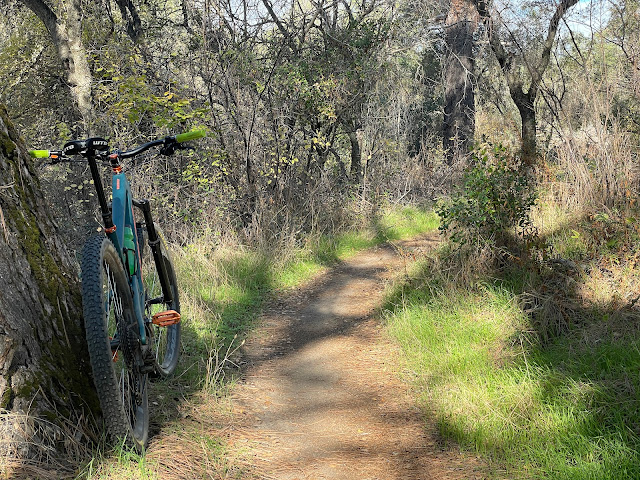My second ride on the Hightower yesterday was much, much better. I would go so far as to call it "fun" and "successful." I guess I can delete the draft of the Craigslist sales ad.
After this ride I didn't experience any of the crazy cramping or extreme soreness like after the first ride. I don't know if adaptation happens that quickly, but I think it certainly helped to give my body time to fully recover after the initial ride. I am still quite fatigued today, perhaps a bit more so than I would be on my hardtail, but not much.
My complaints about the seat tube angle started to fade. I climbed with more speed and power, and that was nice.
While I described my local terrain as "rolling" in the last post, I guess it's all relative. This ride totaled 2500 feet of climbing in 26 miles—about 100 feet per mile. Last summer I rode in Tahoe and did 15 miles and 1500 feet; also about 100 feet per mile.
I think it feels like more elevation gain in Tahoe because the climbs are extended in the mountains, but climbing is climbing. In fact, I would venture that I go harder on shorter, repeated climbs than I would on one long one.
A few years ago I did 31 miles and 3800 feet of gain in Tahoe, which seemed like a lot because the ride was mostly front-loaded with climbing with another big one in the middle. However, if I added another five-mile loop on my local ride, I think I would crack 3000 feet of climbing.
One thing I forgot to mention before was the rock strikes. I had five minor ones on my first ride. I know this is just the nature of long travel. You simply can't raise the bottom bracket 150mm to compensate for all the travel. The bike would feel ridiculous.
I dropped down to 170mm cranks (which is what the complete bike comes with) from my standard 175s. A little bird recommended 165s, but I just couldn't stomach that big a drop. Time will tell if ultimately go that route. Regardless, I only had one rock strike on the second ride. I think after four decades of mountain biking, your brain compensates quickly. I felt myself timing pedal strokes through rocky areas without being completely conscious of it. If that doesn't make sense to you, come back when you hit the 40-year mark.
The only other thing worth mentioning is the annoying clicking coming from the headset area. This is my first foray into the IS headset world. While the process of simply dropping the bearings into the frame without a headset press is kind of cool, it seems wrong. Logically, it seems like you would really need to nail the preload with this system.
A little research provided a possible fix. People have reported that the top dust cap often hits the frame before fully contacting the split ring, so proper preload cannot be achieved. I purchased some FSA .25mm microspacers, which are inserted between the split ring and dustcap, to see if that is the case.
Later.





